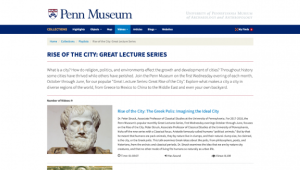 |
September 7, 2018 Volume 24, Number 36 |
Research and Education |
General Interest |
Network Tools |
Revisited |
In the News |
Research and EducationBack to Top | |
 |
|
 |
|
 |
|
 |
|
 |
|
 |
|
 |
|
 |
|
General InterestBack to Top | |
 |
|
 |
|
 |
|
 |
|
 |
|
 |
|
 |
|
Network ToolsBack to Top | |
 |
|
 |
|
RevisitedBack to Top | |
 |
|
In the NewsBack to Top | |
Brazil's National Museum Destroyed In Fire | |
|
Fire Devastates Brazil's Oldest Science Museum The Brazil Museum Fire: What Was Lost In Photos: The Smoldering Remains of Brazil's National Museum Why Brazil's Museum Fire Matters Brazil's fire shows museums are broken. Here's how to fix them. Natural History Museums Are Teeming With Undiscovered Species On September 2, 2018, the National Museum of Brazil in Rio de Janeiro, which was celebrating its bicentennial this year, caught fire and was almost completely destroyed. Though the full extent of the loss is not yet known, it is estimated that as much of 90 percent of the museum's approximately 20 million natural history specimens and cultural artifacts may have been lost. These collections included treasures such as Luzia, one of South America's oldest human fossils, a one-of-a-kind collection of Brazilian lace bugs, and numerous South American and Egyptian mummies, as well as the museum building itself, which was a former palace and a historic landmark. The National Museum had been struggling for years to keep up with building maintenance and repairs due to deep funding cuts, and the day after the fire, demonstrators gathered at the museum to protest the Brazilian government for those decisions. Brazil's government has said they will rebuild the museum, but in response Brazilian anthropologist Mariana Francozo asks, "How do you 'rebuild' a 200-year-old collection that has burned to ashes?" [JDC] The first link takes readers to an article about the fire by Michael Greshko for National Geographic, who also gives some background on the museum's financial difficulties before the fire. Readers will find an article by James Gorman for The New York Times at the second link, which is accompanied by numerous photos of artifacts that were lost to the flames. The third link leads to a collection of large photos curated by Alan Taylor for The Atlantic documenting the fire and its aftermath. At the fourth link, readers will find an article by Sabrina Sholts, a Curator of Biological Anthropology at the Smithsonian Museum of Natural History, writing in Scientific American about the significance of the research work at the National Museum of Brazil. The fifth link takes readers to an article by Thomas McMullan for Wired UK, who makes a case for digitizing museum collections as a way to lessen the tragedy of future destruction. Finally, at the last link readers will find a 2016 article by Ed Yong for The Atlantic explaining the wonder and irreplaceable scientific value of natural history collections. | |
